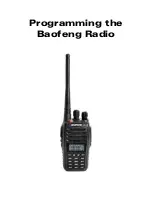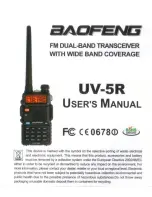
59
iGage iG9 User Manual
Best OPUS Practices for New and Experienced Users
After supplying OPUS targeted receivers for many years, we know that most users experience the
same reoccurring problems.
The suggestions in this chapter will save you time and OPUS related static job failures.
The ‘OPUS Error Message’ Joke
“The NGS processing engine has a big fishbowl with 500 possible error messages printed on little
slips of paper. If a job fails, the OPUS processor removes the five best error messages from the
fishbowl. Next the fishbowl is shaken, and three to five slips are randomly pulled from the fishbowl
and returned to the user.”
OPUS error reporting is getting better. Someday this joke won’t be funny anymore.
But you should remember this: ‘
you are not alone
.’ Every
-Single-Day a substantial portion of all
OPUS submissions fail and most fail with a confusing error message.
#1 OPUS-RS is Dicey
When you submit OPUS occupations, there is a graphic that shows the daily
number of jobs and the daily success rate. On most days over 25% of all
submitted OPUS-RS (Rapid Static) jobs fail!
Relatively few OPUS-Static jobs fail, and most of the Static jobs that fail
initially will successfully process when resubmitted the following day.
When using OPUS RS or Static longer occupations are always better. OPUS-
Static is always more reliable than OPUS-Rapid Static.
Please remember if you are submitting 15 to 30-minute OPUS-RS occupations they WILL fail
regularly
. Don’t be surprised and don’t blame your receiver.
#2 Only Some Submissions are being returned by OPUS
OPUS always returns an email. Always. But missing solutions is a VERY common issue.
If you are not getting solutions or an error messages back, the missing solutions have been trapped
in your email SPAM filter or you have entered your email address incorrectly on the submission
form.
#3 OPUS-RS is Very dependent on the Number, Availability,
Proximity, Distribution and Quality of nearby CORS Stations
The initial stage of OPUS-RS processing determines if a network of three to nine CORS stations
within 250 KM of the user location can be built.
















































